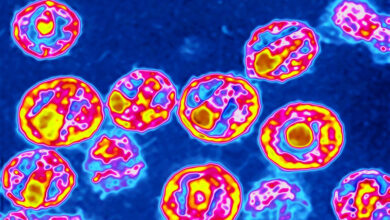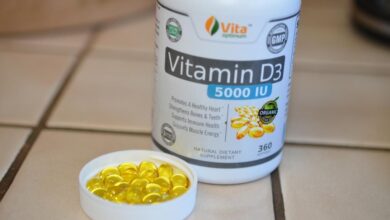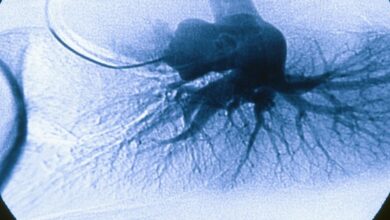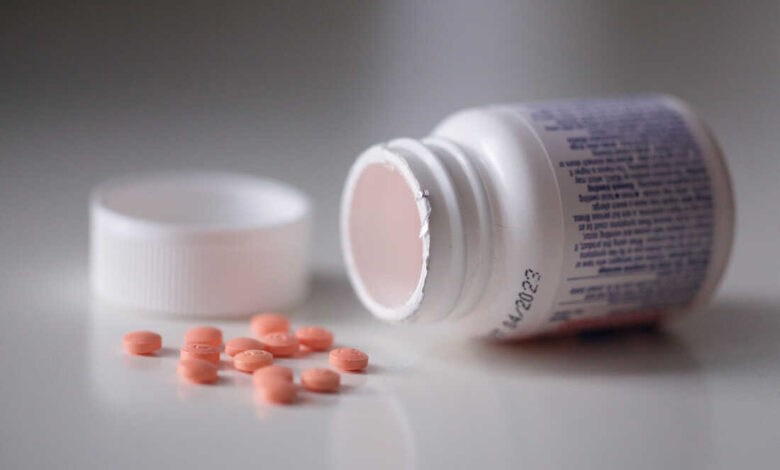
Aspirin for heart attack is a crucial topic for understanding cardiovascular health. This in-depth look delves into how aspirin works to prevent and manage heart attacks, exploring its mechanisms, dosage, potential side effects, and comparisons to other treatments. We’ll examine everything from its role in preventing a heart attack to its use in acute situations and long-term management.
From the molecular level to lifestyle factors, we’ll unravel the complexities surrounding aspirin and heart attacks, presenting evidence-based information in a digestible format. Understanding the potential benefits and risks is key to informed decisions about your health.
Aspirin’s Role in Heart Attack Prevention
Aspirin, a common over-the-counter medication, plays a significant role in preventing heart attacks. Its ability to inhibit platelet aggregation, or the clumping of platelets, is a key mechanism in reducing the risk of blood clots that can lead to heart attacks. This blog post delves into the specific ways aspirin works, the different types, dosages, potential side effects, and its effectiveness compared to other preventative measures.Aspirin’s primary action in preventing heart attacks is its antiplatelet effect.
Platelets, small blood cells, are crucial for forming blood clots at injury sites. However, in the case of heart attacks, the formation of a blood clot in a coronary artery can block blood flow to the heart muscle, causing damage or death of the tissue. Aspirin interferes with the production of thromboxane A2, a substance that promotes platelet aggregation.
By inhibiting this process, aspirin helps prevent the formation of dangerous clots, thus reducing the risk of a heart attack.
Mechanism of Action
Aspirin’s antiplatelet effect is achieved by irreversibly acetylating a key enzyme called cyclooxygenase (COX). This enzyme is crucial in the production of thromboxane A2. By inhibiting COX, aspirin prevents the formation of this pro-clotting substance, thereby reducing platelet aggregation and the risk of blood clot formation. This effect is long-lasting, as the aspirin molecule permanently modifies the enzyme, ensuring continuous antiplatelet action.
Types of Aspirin and Effectiveness
Generally, the different types of aspirin available on the market have similar effectiveness in preventing heart attacks. The active ingredient, acetylsalicylic acid, is the same across various brands and formulations. Differences might exist in the inactive ingredients, which can affect things like absorption rates or potential side effects, but the core antiplatelet action remains consistent.
Dosage Recommendations
Recommended dosages for aspirin use in preventing heart attacks vary depending on individual risk factors and medical conditions. Low-dose aspirin (75-162 mg daily) is often prescribed for primary prevention in individuals at high risk of cardiovascular events. For secondary prevention, after a heart attack or stroke, higher doses might be considered, but this should be discussed with a physician.
Self-medicating with aspirin, especially in higher doses, is not recommended. Always consult a healthcare professional for personalized advice.
Potential Side Effects
While aspirin is generally well-tolerated, potential side effects exist. These can range from mild gastrointestinal issues like upset stomach or nausea to more serious complications such as ulcers or bleeding. The risk of side effects is often higher with higher doses. Regular monitoring and consultation with a physician are important, especially for individuals with pre-existing stomach conditions or bleeding disorders.
Comparison with Other Preventative Measures
While aspirin is a widely used and effective preventative measure, other lifestyle changes and medications can also play a crucial role in heart attack prevention. A healthy diet, regular exercise, and smoking cessation are essential components of a comprehensive prevention strategy. Other medications, such as statins for cholesterol management, blood pressure medications, and blood thinners, may also be prescribed depending on the individual’s risk profile.
Aspirin is often used in conjunction with these other measures to provide a multi-faceted approach to heart attack prevention.
Pros and Cons of Aspirin Use
| Pros | Cons |
|---|---|
| Effective in preventing blood clots | Potential for gastrointestinal side effects |
| Reduces risk of heart attack | Risk of bleeding, especially with higher doses |
| Relatively affordable | Requires careful monitoring and doctor’s supervision |
| Widely available over-the-counter | Not a cure-all; lifestyle changes are crucial |
Aspirin Use in Acute Heart Attack

Aspirin plays a crucial role in the management of acute heart attacks, and its prompt administration is often a life-saving measure. Early intervention can significantly reduce the extent of heart muscle damage and improve patient outcomes. Understanding the recommended dosages, the importance of rapid administration, and the potential benefits is vital for anyone involved in emergency medical care.Rapid action is paramount in acute heart attack situations, and aspirin, due to its ability to inhibit platelet aggregation, can play a crucial part in reducing the damage.
Effective and timely administration is key to improving patient outcomes.
Recommended Dosage for Acute Heart Attack
The recommended dose of aspirin for acute heart attack patients is typically 162-325 milligrams (mg) as a single dose. This dose is intended to rapidly inhibit platelet aggregation, which is a key factor in preventing further clot formation. Higher doses are generally not considered beneficial and may increase the risk of adverse effects.
Importance of Rapid Aspirin Administration
Rapid administration of aspirin is critical in acute heart attack scenarios. The sooner aspirin is administered, the sooner it can begin to inhibit the formation of blood clots, limiting the extent of heart muscle damage. This swift intervention can significantly improve the patient’s chance of survival and recovery. Studies have shown a strong correlation between early aspirin use and improved outcomes.
Potential Benefits in Reducing Heart Attack Damage
Aspirin’s ability to inhibit platelet aggregation is a significant benefit in reducing the severity of heart attack damage. By preventing the formation of blood clots, aspirin can help limit the amount of oxygen-starved tissue and, therefore, the extent of heart muscle damage. This, in turn, can lead to a more favorable prognosis for the patient.
Contraindications for Aspirin Use
While aspirin is generally safe and effective in acute heart attack management, there are contraindications to consider. Patients with a known history of aspirin allergy, active gastrointestinal bleeding, or those taking anticoagulant medications should exercise caution. In these cases, alternative treatment options should be considered. The presence of these conditions may necessitate a different approach, such as the use of alternative antiplatelet agents or even other forms of treatment, depending on the specific circumstances.
Comparison with Other Treatments
Aspirin is a crucial component in the initial treatment of a heart attack, but it’s not the only intervention. Other treatments, such as thrombolytic therapy (clot-busting drugs), and percutaneous coronary intervention (PCI) – procedures to open blocked arteries – are also frequently employed. The combination of aspirin with other therapies often maximizes treatment efficacy. The optimal approach will depend on factors such as the patient’s overall health and the severity of the heart attack.
Steps Involved in Administering Aspirin During an Acute Heart Attack
| Step | Action |
|---|---|
| 1 | Confirm the patient is experiencing a heart attack and ensure their safety. |
| 2 | Verify if the patient has any known contraindications to aspirin use. |
| 3 | Administer aspirin as directed by medical professionals (typically 162-325 mg). |
| 4 | Ensure that the patient is immediately transported to the nearest appropriate medical facility. |
These steps represent a simplified overview and should not be considered a substitute for professional medical guidance. Always follow the instructions provided by medical professionals in the emergency situation.
Aspirin and Other Medications
Aspirin, while a crucial component in heart attack prevention, isn’t always taken in isolation. Many individuals with heart conditions utilize a range of medications, and understanding potential interactions is paramount for optimal health. This section delves into the complexities of combining aspirin with other common heart medications, emphasizing the importance of medical consultation.Aspirin’s anti-platelet effect is a cornerstone of its role in preventing blood clots.
However, other medications used to treat heart conditions, such as blood thinners and certain beta-blockers, can also influence blood clotting. Careful consideration of these interactions is vital to prevent adverse effects.
Potential Interactions and Precautions
The potential for interactions between aspirin and other medications is significant. Combining aspirin with anticoagulants, such as warfarin or heparin, can increase the risk of bleeding. Similarly, some beta-blockers, while not directly interacting with aspirin’s mechanism, can influence blood pressure and heart rate, impacting how the body handles aspirin.
Importance of Doctor Consultation
Before initiating or altering any medication regimen, including aspirin, it’s critical to consult with a healthcare professional. A doctor can assess individual needs, evaluate current medications, and determine the optimal dosage and safety of combining aspirin with other treatments. This personalized approach minimizes the risk of adverse interactions.
Comparison of Anti-platelet Medications
Various anti-platelet medications exist, each with unique mechanisms of action. While aspirin is a widely used and generally effective option, other drugs like clopidogrel and ticagrelor also contribute to heart attack prevention.
| Medication | Mechanism of Action | Usage Considerations |
|---|---|---|
| Aspirin | Inhibits cyclooxygenase, reducing the production of thromboxane A2, an important platelet aggregator. | Effective in preventing blood clots; may cause stomach upset or bleeding in some individuals. |
| Clopidogrel | Inhibits ADP-mediated platelet aggregation. | Often used in combination with aspirin, especially after a heart attack; may have a slightly different risk profile compared to aspirin. |
| Ticagrelor | Inhibits platelet activation by directly targeting the P2Y12 receptor. | A newer antiplatelet; generally well-tolerated, but can increase bleeding risk in some cases. |
Monitoring Blood Thinners and Aspirin
Careful monitoring of blood thinners and aspirin usage is crucial. Regular blood tests, especially those measuring clotting factors, can provide valuable insights into how the body is responding to the combined therapy. This allows for adjustments in dosages or medication choices as needed.
Consequences of Combining Aspirin with Other Blood-Thinning Medications
Combining aspirin with other blood-thinning medications can elevate the risk of bleeding. This increased risk can manifest as bruising, nosebleeds, or more severe complications like internal bleeding. Individuals on such combined therapies must be vigilant about potential symptoms and seek immediate medical attention if any concerning signs arise.
Aspirin and Risk Factors
Aspirin, a widely used medication, plays a crucial role in preventing heart attacks. However, its effectiveness isn’t solely dependent on taking the pill. Understanding the interplay between aspirin and various risk factors is essential for maximizing its protective benefits. This section delves into the connection between aspirin use and heart attack risk factors, highlighting the importance of lifestyle choices and underlying conditions.Aspirin’s ability to prevent blood clots is a cornerstone of its effectiveness in reducing heart attack risk.
However, the presence of certain risk factors can significantly impact how well aspirin works. Lifestyle choices, such as diet and exercise, can either amplify or mitigate the benefits of aspirin therapy. This underscores the critical role of a holistic approach to cardiovascular health.
The Link Between Aspirin and Specific Risk Factors
Several risk factors increase the likelihood of a heart attack. Aspirin’s anti-clotting properties can help mitigate the effects of these factors. High blood pressure, high cholesterol, and smoking are significant risk factors, and aspirin can help offset the increased risk associated with them. For instance, high blood pressure can damage blood vessels, increasing the likelihood of clots forming.
Aspirin’s ability to prevent clots can counteract this damage.
Impact of Lifestyle Choices on Aspirin’s Effectiveness
A healthy lifestyle can significantly enhance aspirin’s protective effects. A balanced diet, rich in fruits, vegetables, and whole grains, contributes to overall cardiovascular health. Regular exercise helps maintain a healthy weight, regulate blood pressure, and improve cholesterol levels, all of which support aspirin’s effectiveness. Conversely, poor dietary habits and a sedentary lifestyle can diminish the benefits of aspirin therapy.
For example, a diet high in saturated fats can contribute to high cholesterol, making blood clots more likely.
While aspirin can be a lifesaver during a heart attack, it’s crucial to be mindful of other potential health risks. Smoking, whether traditional or in the form of e-cigarettes, significantly increases heart attack risk. Learning more about the dangers of e-cigarettes can help you make informed choices about your health. Understanding the potential harm of vaping, as detailed in this article on how bad are e cigarettes , is vital for anyone concerned about heart health.
Ultimately, taking precautions, like avoiding smoking and vaping, and knowing how to use aspirin correctly, can significantly improve your chances of a healthy heart.
Addressing Underlying Risk Factors
It is crucial to address underlying risk factors alongside aspirin use. A comprehensive approach involves consulting with a healthcare professional to manage conditions like high blood pressure, high cholesterol, and diabetes. This collaborative strategy maximizes the potential benefits of aspirin therapy while minimizing potential risks. For example, managing diabetes through diet and medication can help prevent blood vessel damage and reduce the risk of blood clots, enhancing the efficacy of aspirin.
Populations Most Likely to Benefit from Aspirin
Certain populations are at a higher risk of heart attacks and may derive greater benefit from aspirin use. Individuals with a family history of heart disease, those with existing cardiovascular conditions, and smokers are prime candidates for aspirin therapy. This is because these groups have elevated risk profiles. For instance, a family history of heart disease indicates a genetic predisposition to cardiovascular issues.
Balanced Diet and Exercise with Aspirin Use
Maintaining a balanced diet and regular exercise are crucial components of a comprehensive approach to heart attack prevention. A diet rich in fruits, vegetables, and whole grains, along with regular physical activity, can significantly reduce cardiovascular risk factors. This is particularly important when combined with aspirin therapy, as it enhances the overall efficacy of aspirin in preventing blood clots and reducing the risk of heart attacks.
Taking aspirin for a heart attack can be a lifesaver, but sometimes, the strategies we use to manage things aren’t always the most effective. It’s a bit like trying to control kids’ behavior with screen time – it often leads to more screen time, as discussed in this interesting article about parenting challenges: trying to control kids behavior with screen time leads to more screen time.
So, while aspirin can be crucial in a heart attack situation, it’s vital to consider the broader context and potential unintended consequences of our approaches. Ultimately, understanding the complexities of health and behavior is key.
Relationship Between Lifestyle Factors and Aspirin’s Impact
| Lifestyle Factor | Impact on Aspirin’s Effectiveness | Example |
|---|---|---|
| Balanced Diet | Enhances aspirin’s ability to reduce cardiovascular risk. | A diet rich in fruits, vegetables, and whole grains improves overall health and supports aspirin’s anti-clotting properties. |
| Regular Exercise | Improves cardiovascular health, further reducing heart attack risk and supporting aspirin’s effectiveness. | Regular physical activity helps maintain a healthy weight, regulate blood pressure, and improve cholesterol levels. |
| Smoking | Diminishes the effectiveness of aspirin, increasing heart attack risk. | Smoking damages blood vessels and increases the likelihood of blood clots forming, thus reducing the benefits of aspirin therapy. |
| High Blood Pressure | Aspirin can help mitigate the risk of blood clots associated with high blood pressure. | Managing blood pressure through medication and lifestyle changes can significantly enhance the efficacy of aspirin. |
Aspirin and Long-Term Management
Taking aspirin long-term after a heart attack can significantly reduce the risk of future cardiac events. This strategy, however, requires careful monitoring and adherence to the prescribed regimen. Understanding the potential benefits and risks is crucial for patients and healthcare providers.Long-term aspirin use aims to prevent blood clots, which are a leading cause of heart attacks and strokes.
While aspirin therapy can be highly effective, it’s important to acknowledge the possibility of side effects and the necessity for regular check-ups and adjustments to the treatment plan.
While aspirin can play a crucial role in preventing heart attacks, maintaining a healthy lifestyle is key. For example, incorporating exercise into your holiday travel can significantly reduce risk factors. Check out these 5 best ways to get in your exercise while you travel for the holidays to help keep your heart healthy 5 best ways to get in your exercise while you travel for the holidays.
Remember, a balanced approach, including regular exercise, is vital for overall cardiovascular health, even when you’re on the move.
Importance of Regular Checkups and Monitoring
Regular checkups are essential for monitoring the effectiveness and safety of long-term aspirin therapy. These visits allow healthcare providers to assess the patient’s overall health, evaluate any potential side effects, and adjust the dosage or medication regimen as needed. Early detection of issues is crucial for maintaining optimal health and preventing complications.
Potential for Aspirin Intolerance or Side Effects
Some individuals may develop aspirin intolerance or experience side effects over time. Common side effects include stomach upset, nausea, or bleeding. The frequency and severity of these side effects vary among individuals, making individualised monitoring essential. If side effects become problematic, the doctor may adjust the dosage or prescribe additional medications to mitigate the issues.
Adherence to Prescribed Aspirin Regimens
Adherence to the prescribed aspirin regimen is crucial for maximizing the benefits and minimizing the risks. Consistency in taking the medication, as directed by the physician, is vital for preventing blood clots and maintaining cardiovascular health. Patients should discuss any difficulties they encounter in adhering to the regimen with their doctor, who can offer support and alternative solutions.
Need for Regular Blood Tests to Monitor for Complications
Regular blood tests are crucial to monitor for any complications arising from long-term aspirin use. These tests can assess blood clotting factors, platelet counts, and overall blood health, helping to identify any potential problems early. Monitoring through blood tests is essential for proactive management and adjustment of the treatment plan.
Key Aspects of Long-Term Aspirin Management
| Aspect | Details |
|---|---|
| Regular Checkups | Essential for evaluating effectiveness, identifying side effects, and adjusting the treatment plan. |
| Aspirin Intolerance/Side Effects | Some individuals may experience stomach upset, nausea, or bleeding. Individualized monitoring is crucial. |
| Adherence to Regimen | Consistent intake of aspirin, as prescribed, is vital for optimal results. Communication with the doctor is crucial for any difficulties. |
| Regular Blood Tests | Crucial for monitoring blood clotting factors, platelet counts, and overall blood health, allowing early identification of complications. |
Illustrative Information: Aspirin For Heart Attack
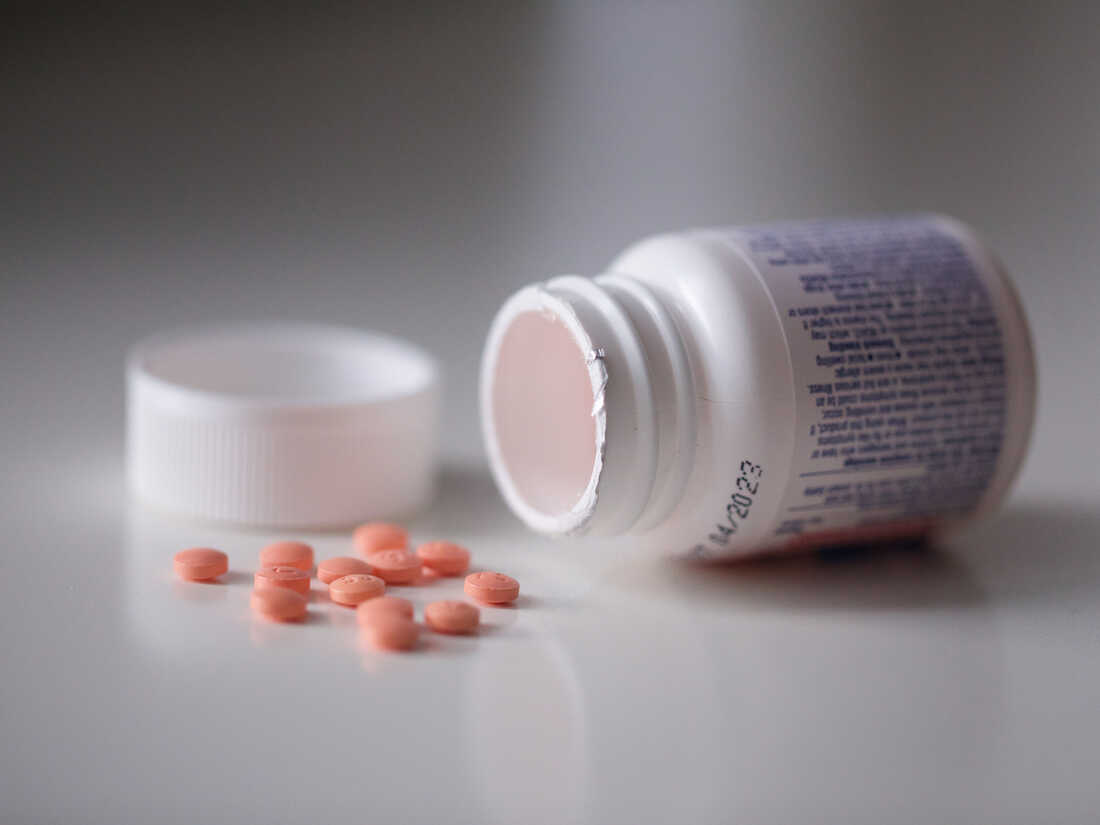
Understanding the intricate mechanisms behind aspirin’s role in preventing heart attacks requires a look at its molecular structure, its interaction with blood platelets, and the visual representation of healthy and diseased arteries. This section will detail these processes to provide a clearer picture of aspirin’s protective action.
Aspirin Molecular Structure
Aspirin, or acetylsalicylic acid, is a simple organic compound with a specific molecular structure. Its chemical formula is C₉H₈O₄. This structure allows it to exert its anti-clotting effects. A crucial aspect of its structure is the presence of the acetyl group (CH₃CO) attached to the salicylic acid ring. This specific arrangement is essential for its function.
Mechanism of Action: Aspirin and Blood Clots
Aspirin works by irreversibly inhibiting the activity of cyclooxygenase (COX) enzymes, specifically COX-1 and COX-2. These enzymes are crucial in the production of thromboxane A2 (TXA2), a potent vasoconstrictor and platelet aggregator. By blocking COX, aspirin prevents the formation of TXA2, thus reducing platelet aggregation and the formation of blood clots. This action helps prevent the formation of potentially life-threatening blood clots in coronary arteries.
Healthy vs. Blocked Artery
Imagine a healthy artery as a smooth, round pipe, allowing blood to flow freely. In contrast, a blocked artery is like a pipe with a significant buildup of plaque. This plaque, composed of cholesterol, fats, and cellular debris, narrows the artery’s lumen (the inside space), restricting blood flow. The reduced blood flow can lead to a heart attack if the blockage is severe enough.
A healthy artery displays a clear, unobstructed lumen, whereas a blocked artery shows a significantly reduced lumen, often with a buildup of plaque.
EKG During a Heart Attack, Aspirin for heart attack
An electrocardiogram (EKG) is a diagnostic tool that measures the electrical activity of the heart. During a heart attack, there are characteristic changes in the EKG tracing. The EKG will show a series of abnormal waves that indicate an area of the heart muscle is not receiving enough oxygen. These changes vary depending on the location and severity of the heart attack.
For example, ST-segment elevation myocardial infarction (STEMI) is characterized by a significant elevation of the ST segment in the EKG. Understanding these changes is vital for rapid diagnosis and treatment.
Aspirin and Blood Platelets: A Visual Representation
Imagine a graphic with platelets depicted as small, round, sticky particles. Normal blood flow is shown with platelets circulating freely. When a blood vessel is injured, the platelets encounter the damaged lining and release substances. These substances trigger a cascade of reactions leading to platelet aggregation, forming a clot. In the graphic, show aspirin molecules interacting with the platelet surfaces, preventing the platelets from sticking together.
This prevents the formation of a clot.
Heart Anatomy and Blood Vessels
The heart is a muscular pump responsible for circulating blood throughout the body. Its intricate structure is crucial for efficient blood flow. The graphic should display the heart with labels highlighting major blood vessels. These vessels include the coronary arteries, which supply the heart muscle with oxygenated blood. The graphic should also highlight the aorta, the main artery that carries blood away from the heart, and the vena cava, the main vein that returns deoxygenated blood to the heart.
This illustration aids in understanding the critical role of blood vessels in maintaining cardiovascular health.
Conclusion
In conclusion, aspirin plays a multifaceted role in heart attack prevention and management. While effective, it’s crucial to understand its mechanisms, dosages, potential interactions with other medications, and potential side effects. Consulting with a healthcare professional is essential to determine the appropriateness and optimal use of aspirin, particularly for individuals with pre-existing conditions or specific risk factors. Ultimately, a comprehensive approach that combines aspirin therapy with lifestyle modifications and regular checkups is paramount for managing heart attack risk effectively.
